
When we think of wildlife in Laguna, many would first think of Fish or Reptiles. But, as a large lake, many Birds will also thrive in the rivers, wetlands, and forests nearby.
Get to know some of the common
Birds you can meet in Siniloan. Ross Rawolle, a Bird photographer, shares his experience observing his Avian friends found in Laguna.
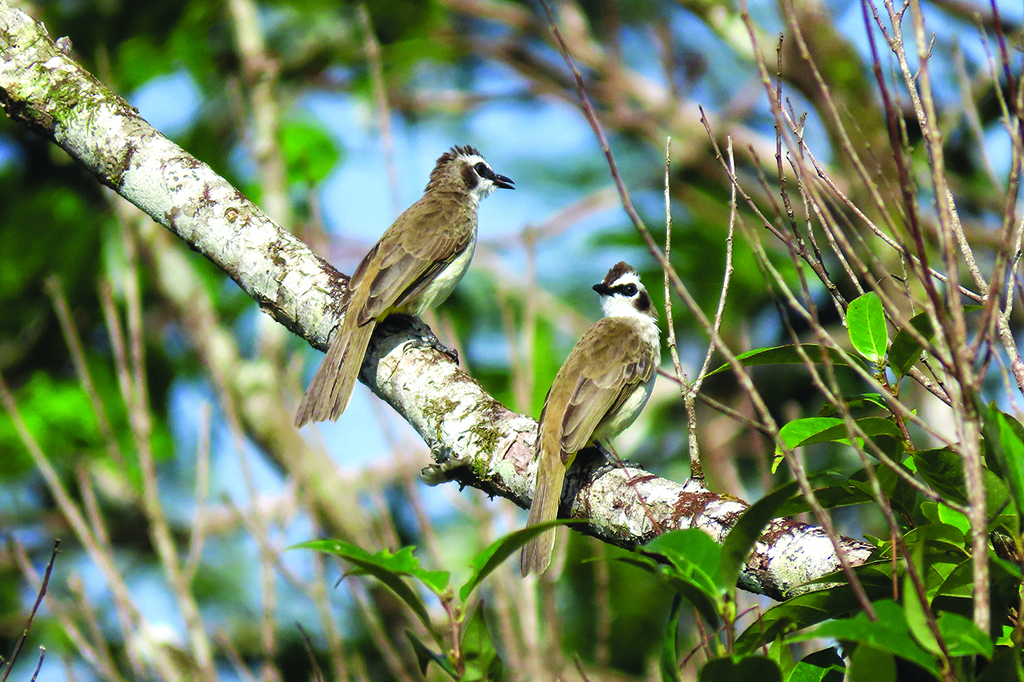
QUESTION: How long have you been photographing Birds?
Answer: Nagsimula ako four years ago. Madaling kuhanan ang mga Ibon kumpara sa ibang wildlife. Madali silang makita dahil lumilipad-lipad at nasa mga puno sila. Bukod pa doon, mas marami din sila kaysa sa mga Mammal at Reptile na umiiwas sa panganib ng mga tao.
(I started four years ago. Birds are easier to photograph compared to other wildlife. They are easy to see because they fly and are perched on trees. Aside from that, they are more common compared to Mammals and Reptiles, who tend to avoid the dangers of people.)
TAXONOMIC INFORMATION
Kingdom: Animalia
Phylum: Chordata Order: Passeriformes
Family: Pycnonotidae
Genus: Pycnonotus
Species: Pycnonotus goiavier
The term Bulbul comes from the Persian word for
Nightingale, Bolbol. This term eventually became used for all Birds in Family Pycnonotidae even though not all species of this family have melodious songs.
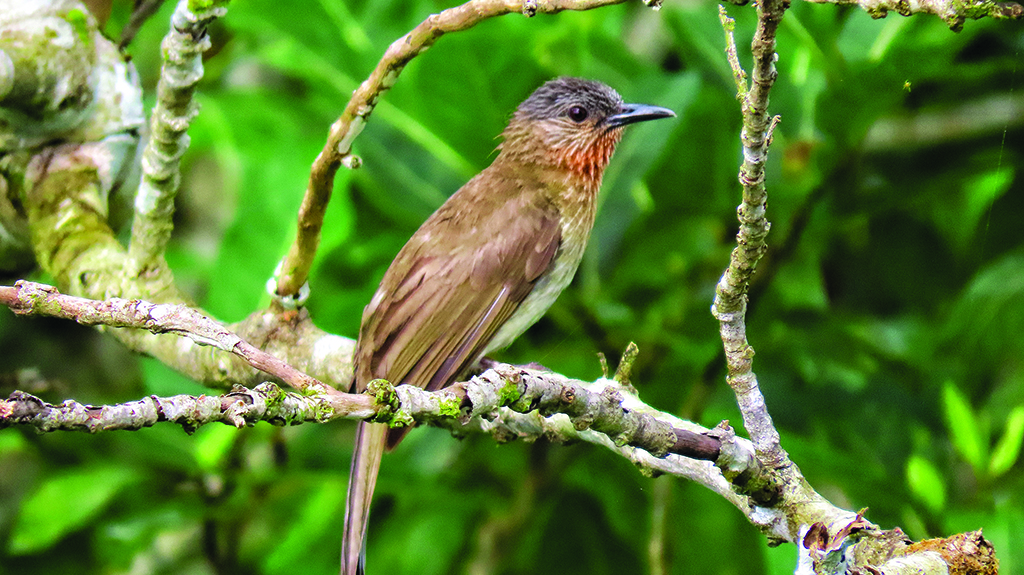
Q: How are the Yellow-Vented Bulbul and Philippine Bulbul different?
A: Ang mga Bulbul ay kilala dahil sa maganda nilang huni. Ang Yellow-Vented Bulbul ay
isa sa mga Ibon na madalas mong makikita sa sobrang adaptive nila sa kahit anong environment – mapa-siyudad man o gubat, nandoon sila. Hindi sila katulad ng Philippine Bulbul na endemic din sa ating bansa at makikita lamang sa mapupunong mga lugar sa probinsya, at sila ay umiiwas sa mga mataong lugar.
(Bulbul are known for their beautiful sounds. The Yellow-vented Bulbul is a common bird since they easily adapt to their environment – whether in the city or the forest, they are there. They are not like the endemic Philippine Bulbul who tend to avoid areas with a lot of people and can only be seen in forested areas in the province.)
TAXONOMIC INFORMATION
Kingdom: Animalia
Phylum: Chordata
Order: Passeriformes
Family: Pycnonotidae
Genus: Hypsipetes
Species: Hypsipetes philippinus
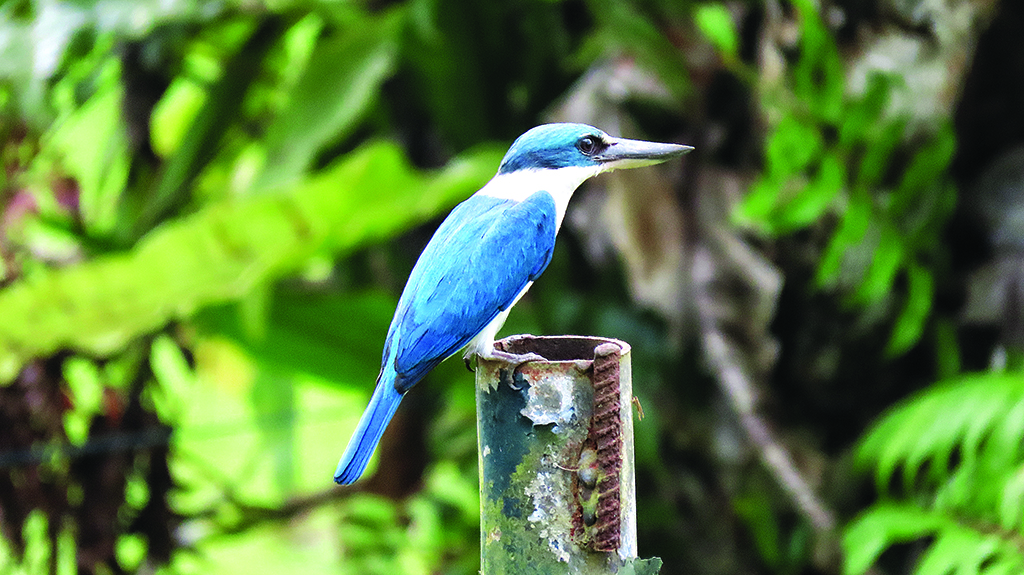
Q: Where did you spot them?
A: Nakita ko ang mga Ibon na ito noong nag camping kami sa Siniloan, Laguna. Kasabay ng pag-relax sa magandang tanawin, nakakaaliw din pagmasdan ang samu’t-saring Ibon na abalang gampanan ang papel nila sa kalikasan.
(I saw these Birds when we went camping in Siniloan, Laguna. While relaxing with the gorgeous landscape, it was entertaining to observe the different kinds of Birds going about their business in nature.)
TAXONOMIC INFORMATION Kingdom: Animalia
Phylum: Chordata
Order: Coraciiformes
Family: Alcedinidae Genus: Todiramphus
Species: Todiramphus chloris
Q: Can you tell us the difference between the White-Throated Kingfisher and the White Collared Kingfisher?
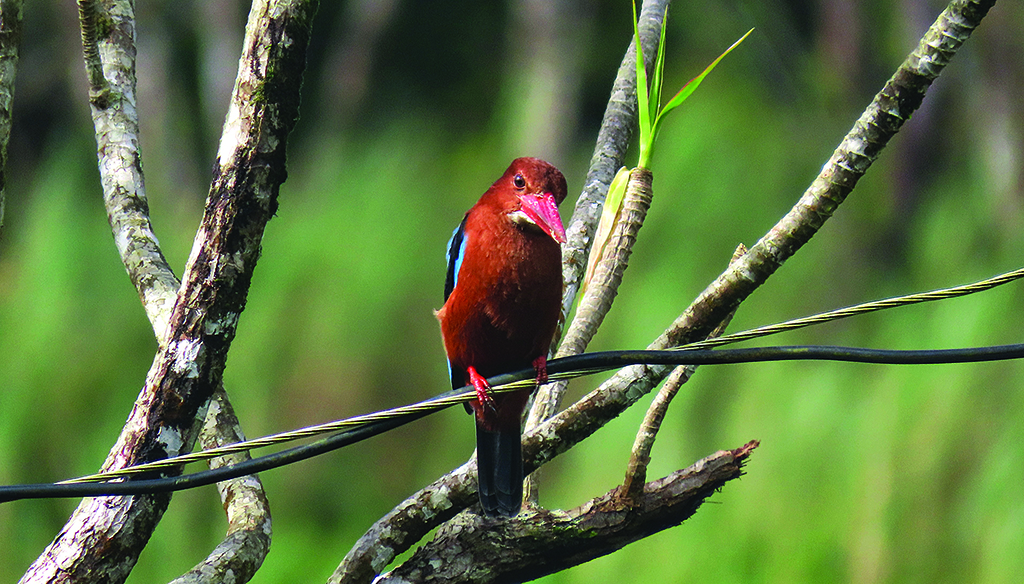
A: Ang Kingfisher ay ang isa sa mga paborito kong pagmasdan na Ibon. Bukod sa magagandang kulay nila, nakamamangha din sila pag masdan kapag nag-aabang ng mahuhuling pagkain.
Ang White Collared Kingfisher ay isa sa mga adaptive na Kingfisher. Hindi lamang sa mga tabing-ilog o sapa sila makikita; minsan, makikita din sila sa mga mapupunong lugar sa mga siyudad.
Ang White-throated Kingfisher ay makikita sa mga tabing-ilog o sapa. Territorial at tinataboy nito ang ibang mga Ibon na lumalapit sa pwesto nito.
(Kingfishers are one of my favorite birds to see. Aside from their beautiful colors, it’s a thrilling experience to watch them hunt prey.
The White Collared Kingfisher is one of the adaptive Kingfishers. They are seen not only near rivers and creeks; sometimes, they can also be seen in forested areas of the city.
The White-Throated Kingfisher is seen close to rivers and creeks. They are territorial and will chase away other Birds that go near their perch.)
TAXONOMIC INFORMATION
Kingdom: Animalia
Phylum: Chordata
Order: Coraciiformes
Family: Alcedinidae
Genus: Halcyon
Species: Halcyon smyrnensis
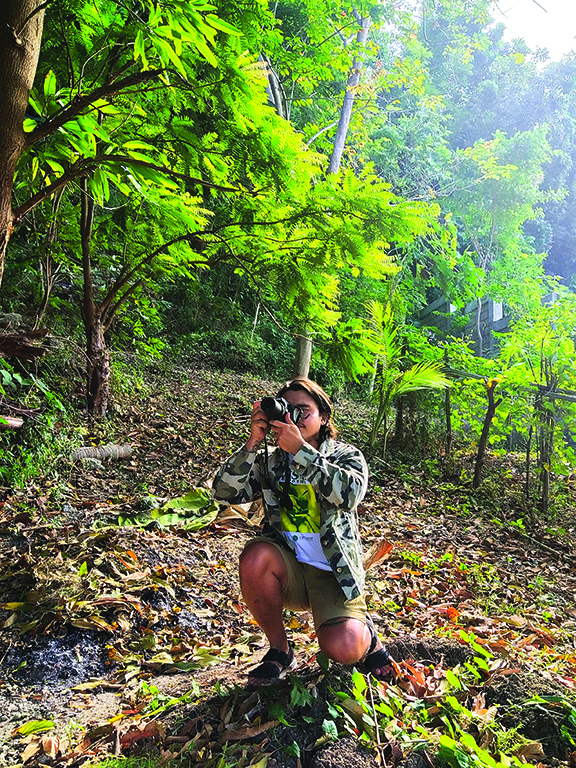
SHARED WORLD
When asked how his being a vegan has influenced his hobby of, Rawolle said, “Bilang isang vegan, adbokasiya ko ang pagrespeto at pagpapahalaga sa mga hayop.
At dahil sa global warming at walang tigil
na paglobo ng populasyon nating mga tao na sanhi ng pagkasira pa ng maliit na porsyento ng natitirang kagubatan, nais ko na ipakilala ang mga Ibon na ito sa pamamagitan ng litrato bago sila tuluyang mawala kung hindi tayo magbabago. (As a vegan, my advocacy is to respect and value animals. Because global warming and the increase in human population cause the destruction of our remaining forests, I want others to know, through my photos, about these Birds before we lose them for good if we don’t change our ways.)”
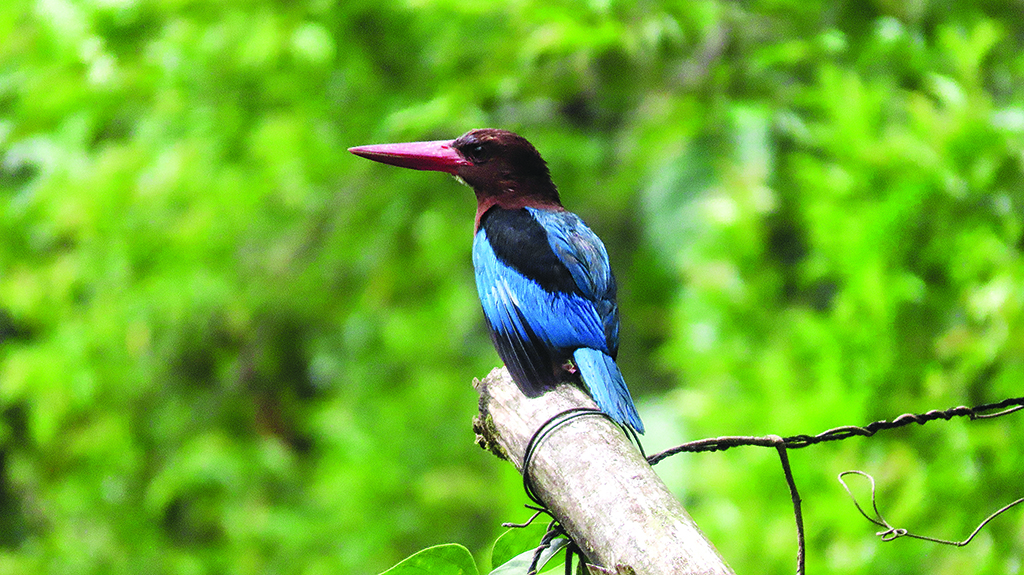
WHEN CITIES HURT BIRDS
Urban sprawl is one of the biggest drivers of habitat loss. This happens when cities are poorly planned and heavily car-dependent, causing them to expand outward from city centers.
Redesigning our cities to be more compact and pedestrian-friendly with accessible urban green spaces is key to saving habitat from being eaten up by cities.






